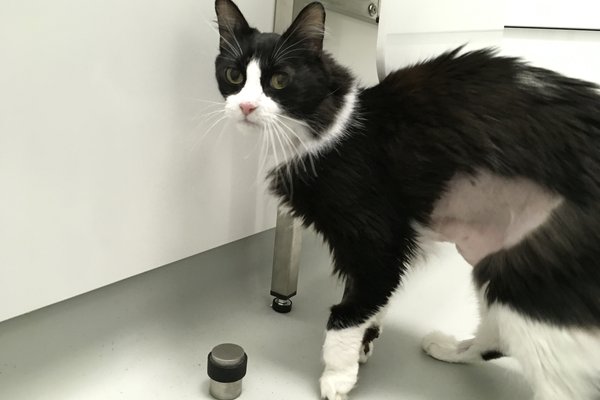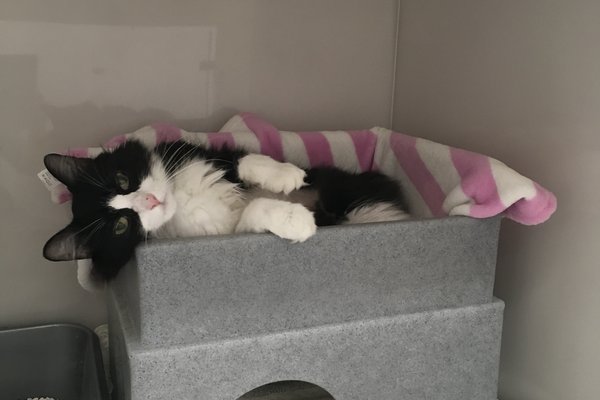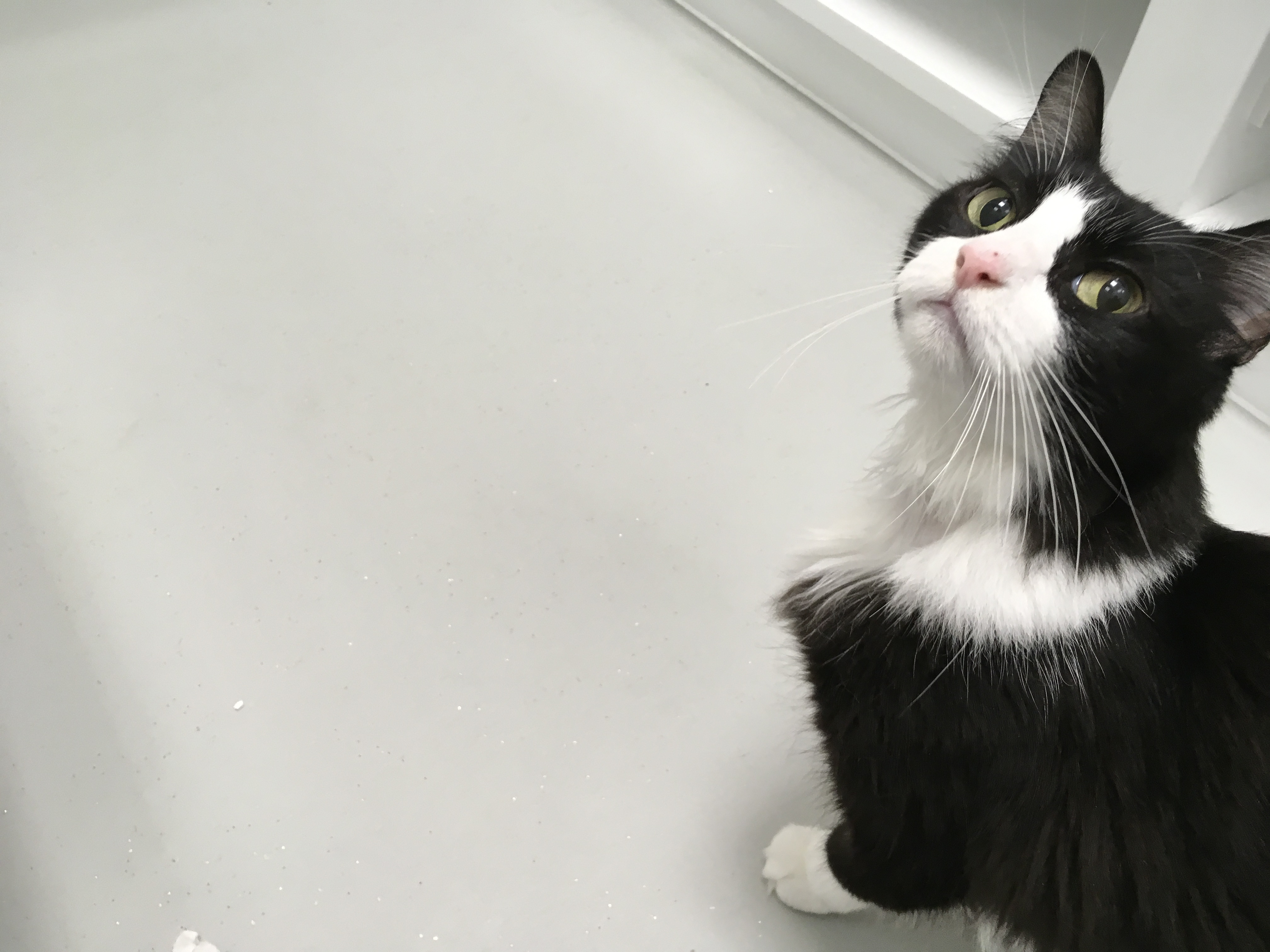Willow is an adorable Domestic Medium Haired cat who relocated to the UK in January this year from Trinidad.
Willow was booked in for a consultation as her owners were a little concerned as she has been having on-going nasal discharge, sneezing and loud respiratory sounds for about 10 months which hadn’t really responded to various treatments.
She was examined by Dr. Panayiotis who felt it could be one of a few things; secondary to dental disease; a fungal infection or worse case a tumour. Further investigation was required to determine the diagnosis.
Willow was booked in for the following week to see Dr. Jeremy for examination under general anaesthesia and diagnostic imaging. X-rays of the nasal cavity were taken prior to rhinoscopy and pharyngoscopy. The latter two procedures use unique feline-sized endoscopes that can examine the nasal cavity using the cat’s nostrils as an entry point and then examining the back of the throat and nose through the throat. Prior to starting these procedures, we had taken blood samples to check on her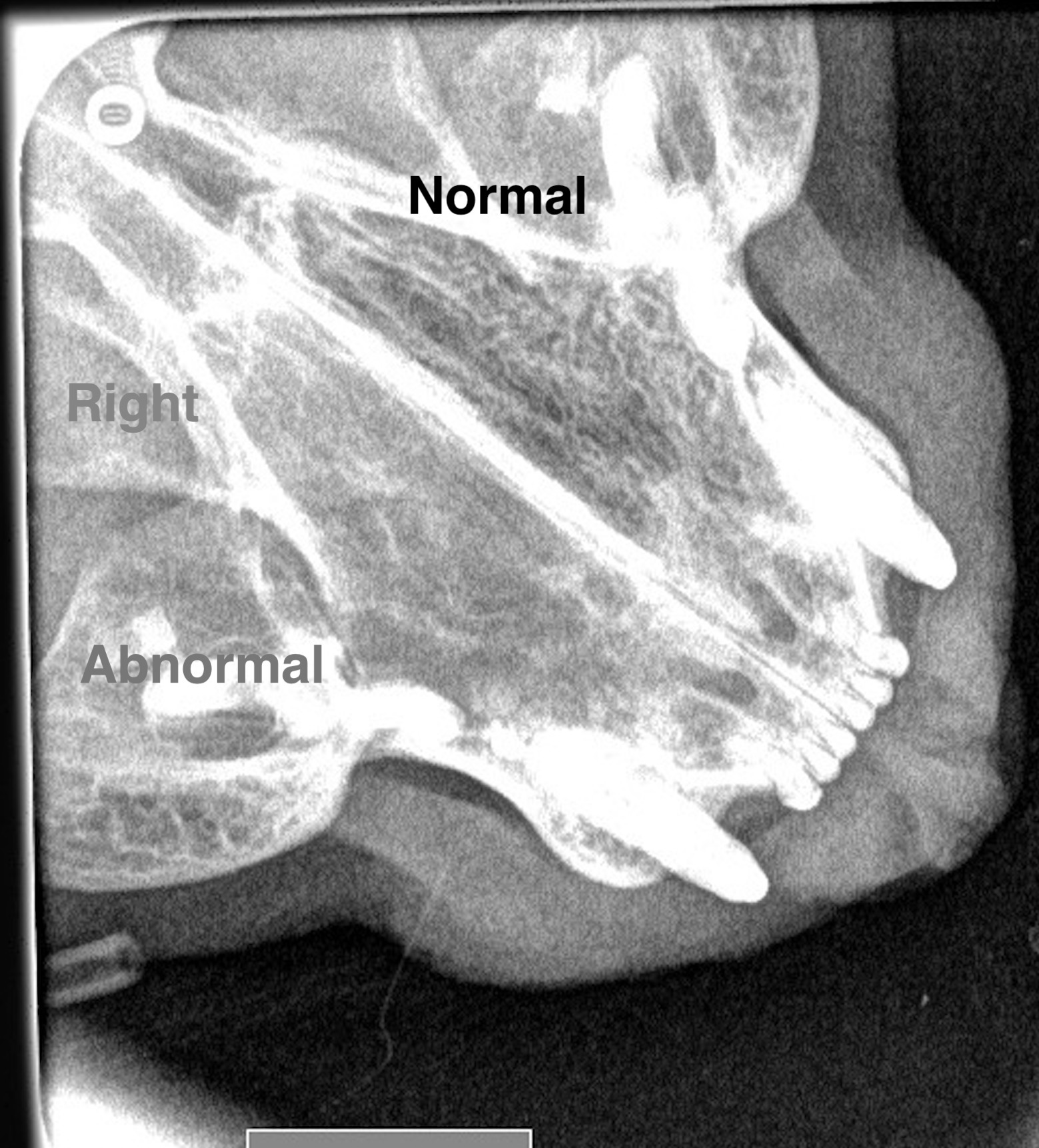 overall systemic health but also to check her blood was clotting normally as bleeding is a common side-effect of nasal cavity examination.
overall systemic health but also to check her blood was clotting normally as bleeding is a common side-effect of nasal cavity examination.
The x-rays (left) showed reduced normal bone density and definition in her right nostril. If you compare the image with the left side you can see how ‘blurry’ the right side looks.
Pharyngoscopy showed that a large soft tissue mass was obstructing the internal opening of both of h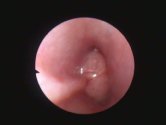 er nostrils (choanae) which was why poor Willow was having such a hard time with her breathing. Dr Jeremy tried to pass a very mall catheter from the external nostrils through these internal nostrils to determine the degree of obstruction and it was impossible to pass this. Rhinoscopy of the right nasal cavity also showed large areas of abnormal tissue proliferation.
er nostrils (choanae) which was why poor Willow was having such a hard time with her breathing. Dr Jeremy tried to pass a very mall catheter from the external nostrils through these internal nostrils to determine the degree of obstruction and it was impossible to pass this. Rhinoscopy of the right nasal cavity also showed large areas of abnormal tissue proliferation.
Through repeated forced flushing of the nasal cavity a number of large samples were obtained of the mass for analysis, this also effectively debulked (reduced in size) the tumour which would also provide temporary relief for Willow. We suspected that this was a nasal lymphoma.
Willow had a good recovery and was discharged that day with pain relief and to wait for the results. She was immediately a happier cat, breathing better, rubbing her head around the cage and generally much, much happier.
The histopathology results unfortunately confirmed Dr Jeremy’s suspicions and the diagnosis was diffuse B-cell nasal lymphoma. Lymphoma in cats normally carries a guarded prognosis; however nasal lymphoma is prognostically the best variant, with a good chance of long term remission and even a possibility of cure. Treatment response rates average 66% to 75% with reported median survival times of 12-30 months
As you can imagine this is devastating news, however now we had a diagnosis we could make a plan. We discussed all options with Willow’s wonderful humans and decided that a multi-drug chemotherapy protocol was the best option to proceed with. These protocols require a significant commitment both in time and finances and we have significant respect for those that decide to undertake them.
Chemotherapy often makes owners think of constant sickness, hair loss, poor quality of life and often that is seen in human medicine. The important difference between cancer therapy in humans, and that offered for animals, is in the goals of therapy. In humans, many cancers are cured, and cancer survivors may enjoy many decades of comfortable life. For this reason, treatment of cancer in humans is aggressive and often associated with severe side effects. While pet animals are very similar biologically to humans, therapies are directed at preserving quality of life; and tumour control, or remission, is often the aim rather than cure at any cost.
Most of our patients tolerate the drug-effects of chemotherapy extraordinarily well, but some are less keen about seeing us so frequently for blood samples! Willow is gorgeous, friendly and loving unless she catches the faintest hint of anything other than cuddles, then she finds 3 extra legs and 10 extra nails to let us know her views. We use careful minimal handling and specific sedation protocols to enable everyone to be safe particularly during chemotherapy administration.
Prior to starting chemotherapy, we checked to see if the tumour had spread anywhere else in the body through abdominal ultrasound, chest x-rays and microscopic examination of her local lymph gland. The great news was that she was all clear so the disease was localized to the nasal cavity the best case we could hope for.
Chemotherapy takes place in a specially dedicated area with specific equipment to protect those administering and receiving it.
She stayed overnight and you would not know anything was wrong! You can see her in the photos relaxing, playing and eating lots!
Willow is on her fourth week of therapy and doing brilliantly. She is eating well, no longer has breathing problems, no sneezing or discharge from her eyes and is playing normally like she used to.
She is such a brave little girl and we love her! Well done Willow! Continue the good fight!


